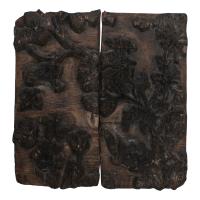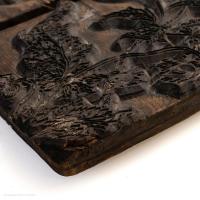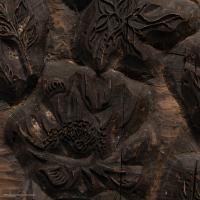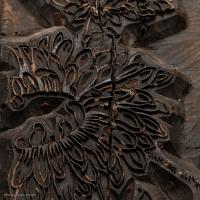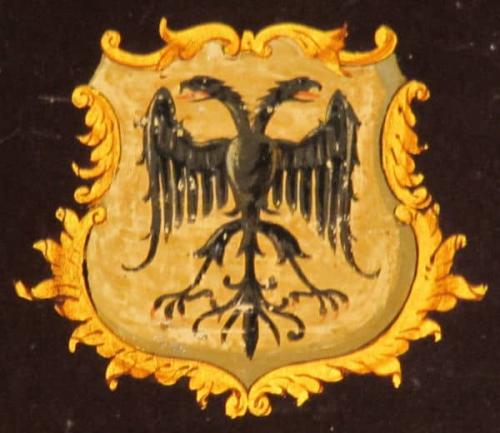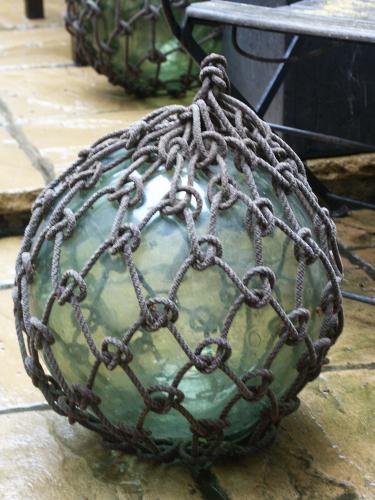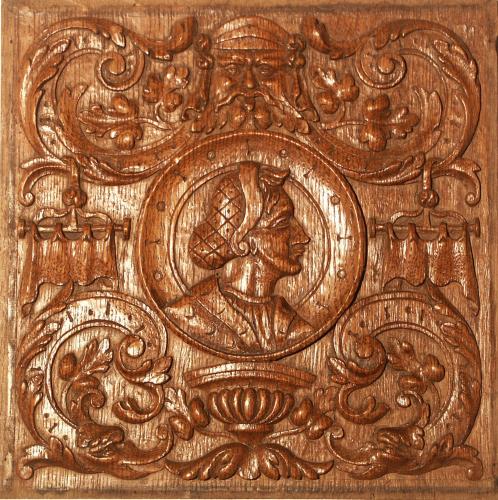
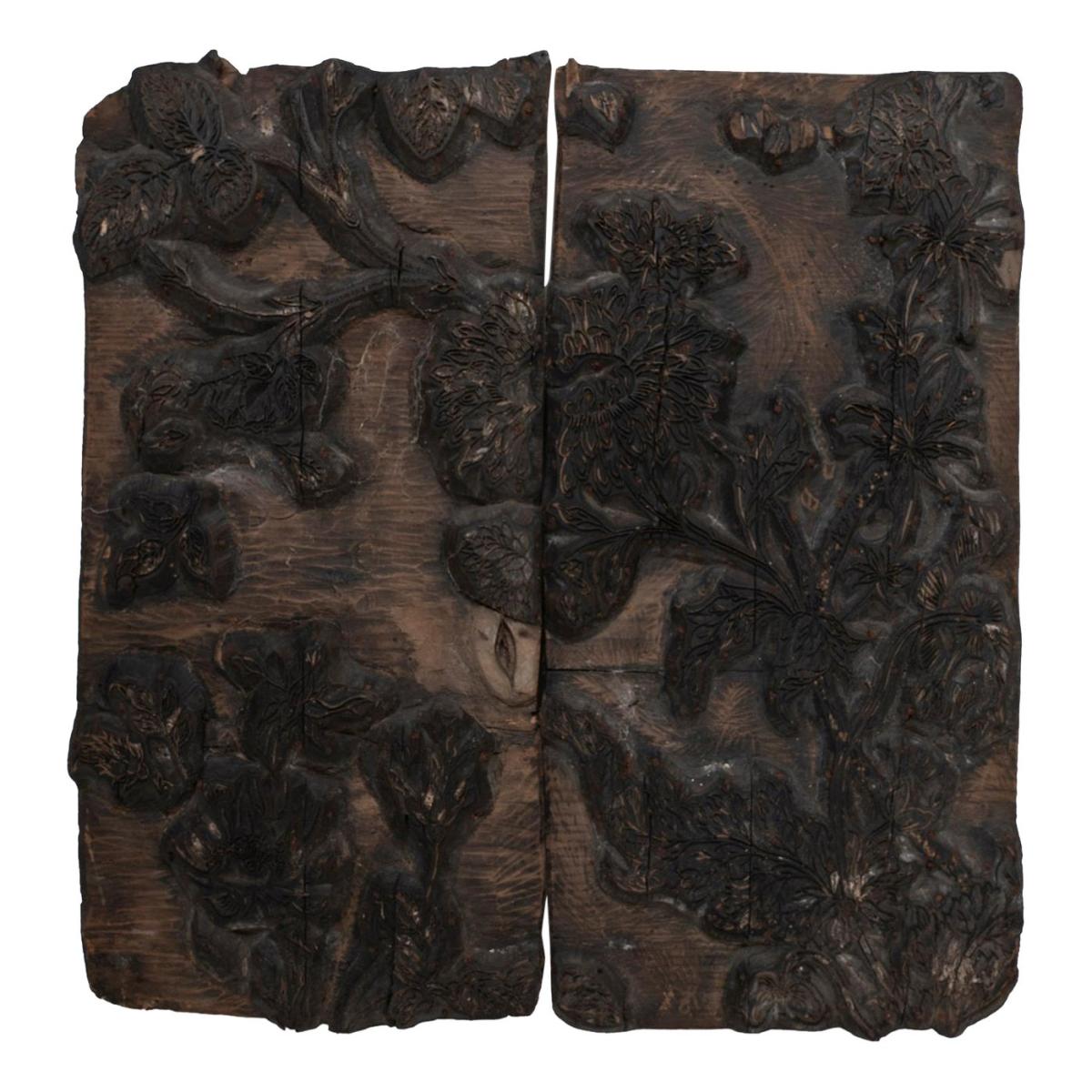
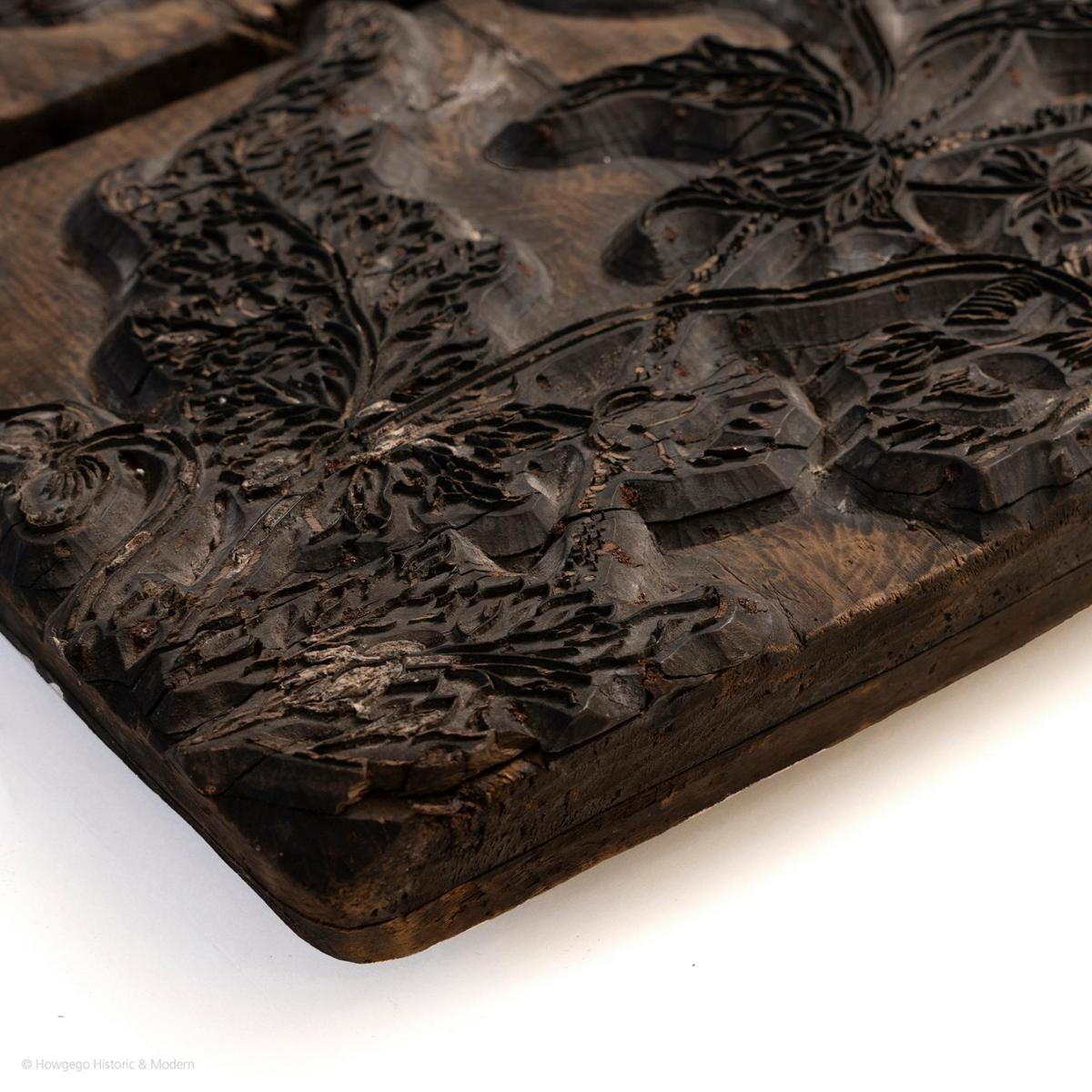
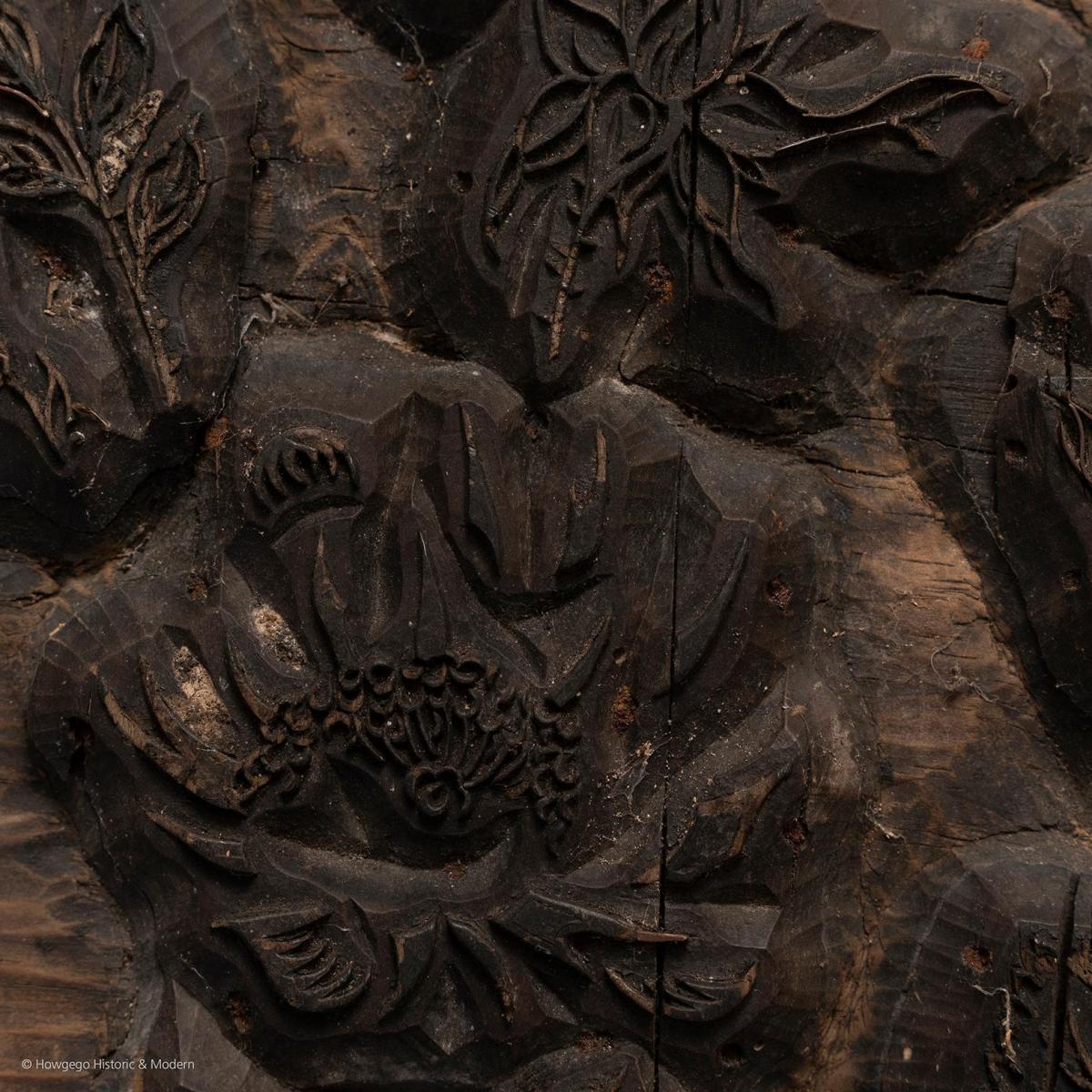
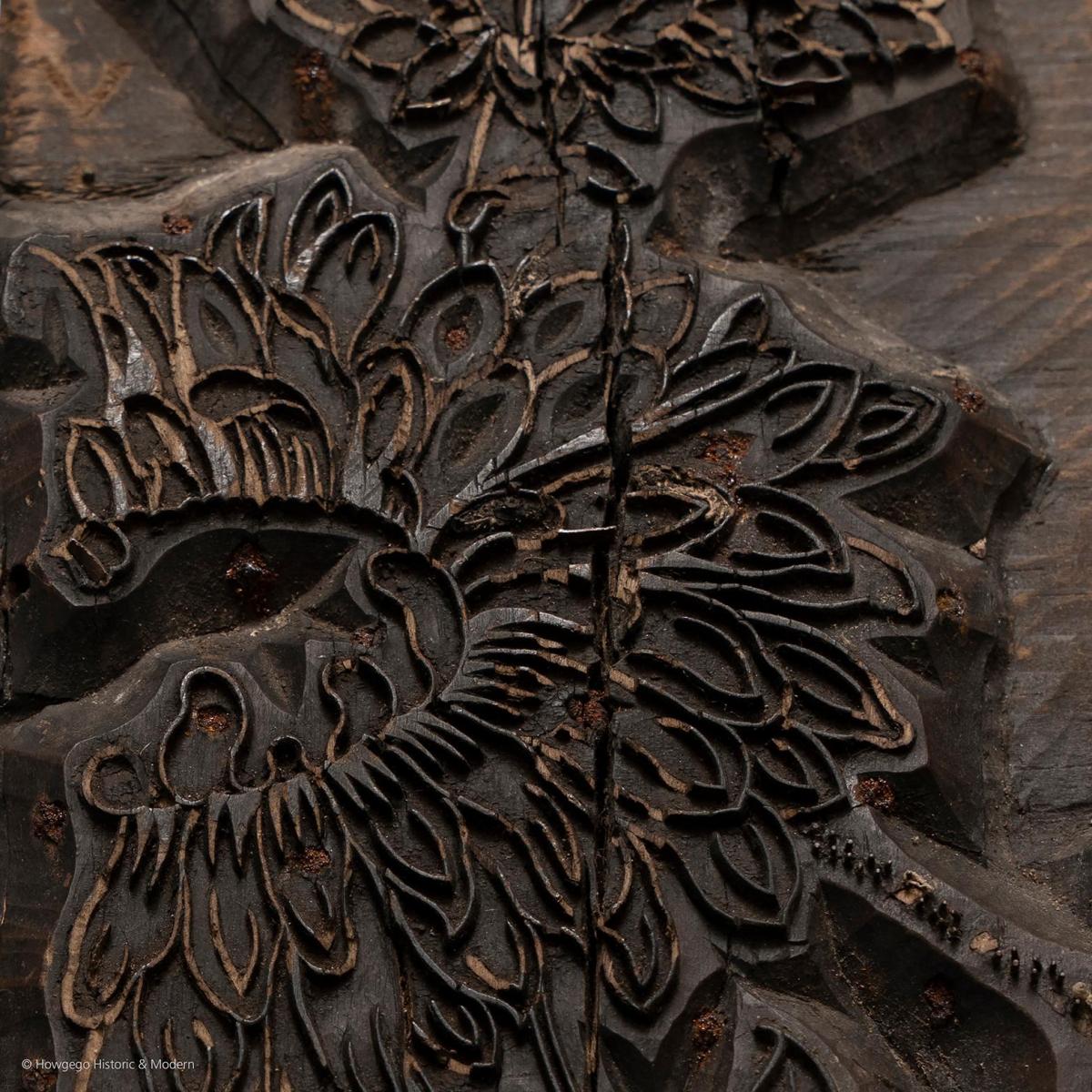
Price
£3600.00This object is eligible for a Certificate of BADA Provenance
The BADA Standard
- Since 1918, BADA has been the leading association for the antiques and fine art trade
- Members are elected for their knowledge, integrity and quality of stock
- Our clients are protected by BADA’s code of conduct
- Our dealers’ membership is reviewed and renewed annually
- Bada.org is a non-profit site: clients deal directly with members and they pay no hidden fees
Rare Oak Wallpaper Printing Block, circa 1820.
A rare woodblock with complete repeat. Of interest to wallpaper collectors or as a conversation piece in the home as a decorative carved wallhanging.
Using metal banding laid over wood carving to create a more intricate design in finer detail than can be achieved with wood carving alone. The pattern with large flowerheads with many petals, possibly peonies or chrysanthemums and large leaves with many spines and veins.
Wallpaper began as an elite product. Block printing, which was a slow and labour intensive technique, was the method most commonly used to print wallpapers until the early- 19th century. As this block illustrates, the blocks were a significant size and weight, so printers required considerable strength and stamina as well as skill.
In the 18th century wallpapers became an important decorative feature in the homes of prosperous town-dwellers, merchants and gentry as well as the aristocracy. In response to this new inventions made the production of wallpaper cheaper and quicker as new printing techniques meant that wallpaper was produced in continuous rolls and thousands of yards of paper could be produced in a day.
In 1778, Louis XVI issued a decree that required the length of a wallpaper roll to be about 34 feet, in 1785 Christophe-Philippe Oberkamp invented the first machine for printing wallpaper in 1785 and Nicholas Louis Robert invented a way to make an endless roll of wallpaper around the same time. By the 1800s, French scenic papers printed with hand-carved blocks, some taking as many as 5,000 blocks to produce, were very popular.
Dimensions
Height: 47 cm (18.51 in), Width: 48 cm (18.9 in), Depth: 6 cm (2.37 in)Condition report
Good. Wear consistent with age and use.The BADA Standard
- Since 1918, BADA has been the leading association for the antiques and fine art trade
- Members are elected for their knowledge, integrity and quality of stock
- Our clients are protected by BADA’s code of conduct
- Our dealers’ membership is reviewed and renewed annually
- Bada.org is a non-profit site: clients deal directly with members and they pay no hidden fees


